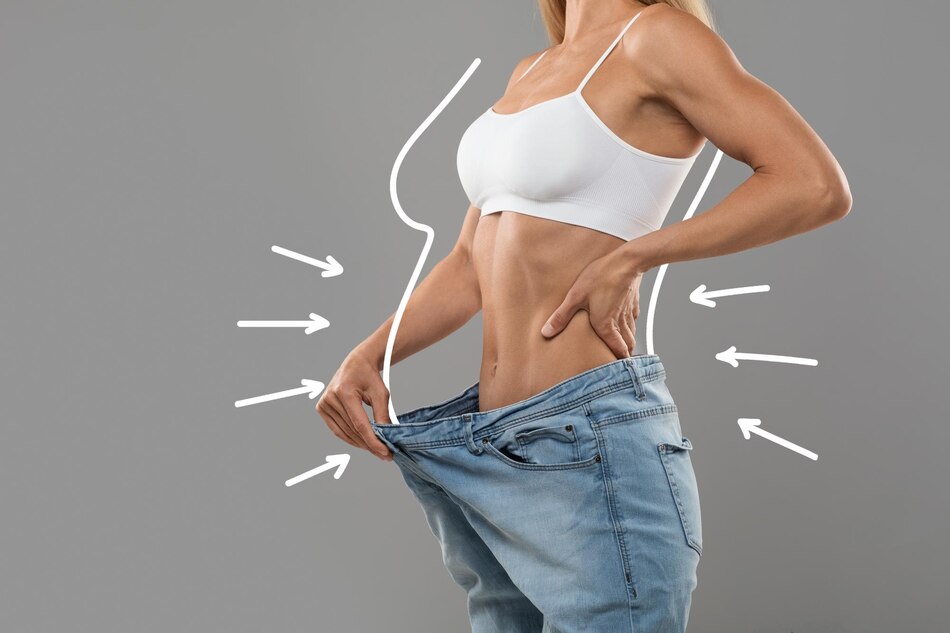In today’s health-conscious, weight-management-focused world, calories dominate the conversation. Beyond reducing food, burning calories is essential yet understudied. This article discusses calorie burning and aims to burn 1000 calories a day. We’ll illuminate the complex process of calorie burning, its causes, the safest methods, and the most significant activities. We discover how calorie burning may alter overall well-being beyond statistics.
Understanding Calorie Burning:
Effective weight control requires calorie-burning knowledge. A calorie deficit occurs when calories spent exceed calories eaten. Diet and exercise must be balanced to reach this shortfall. It goes beyond statistics to explain macronutrient-to-fuel conversion.
Calorie burning involves thermogenesis, metabolism, and exercise. Controllable activities like walking, weightlifting, and high-intensity interval training help. The objective is to regulate weight and optimize fat use for energy.
Individuals may modify their weight reduction strategy by knowing calorie in and out dynamics. They may make educated food and fitness choices with this information. It stresses limiting calorie intake and increasing energy expenditure via planned physical exercise. Overall, knowing calorie burning is essential for weight control and long-term health.
Calorie Burning Process:
The dynamic and complex calorie-burning mechanism is essential to weight control and health. Burning calories converts macronutrients into fuel for biological processes and physical activities.
Via meal digestion, the body creates heat and burns calories via thermogenesis. Another critical component is metabolism, which involves cell chemical activities that sustain life. Even at rest, these natural processes contribute to baseline calorie expenditure.
The body’s internal processes don’t burn calories alone. Adjustable factors like exercise considerably affect energy consumption. Walking, weightlifting, and high-intensity interval exercise burn more calories. More vigorous and extended activity burns more calories.
Understanding this process helps people make lifestyle decisions. It stresses the need for calorie restriction and physical activity strategies for weight management. The calorie-burning process is a complex interaction of internal and environmental factors that allows people to modify their health and fitness journey actively.
Factors Influencing Calorie Burning:
Numerous variables affect metabolism and energy expenditure, affecting daily calorie-burning capability. Weight management and fitness optimization benefit from understanding these aspects.
Weight:
Calorie expenditure depends on weight. Higher-weight people burn more calories per minute during exercise. A more considerable body requires more energy to move, burning more calories. Weight control is complicated and requires more than just calorie burning.
Gender:
Studies show that males burn more calories than women. The difference is commonly linked to men’s larger muscular mass, which is more metabolically active than fat. Thus, guys burn more calories due to their greater resting metabolic rate.
Genetic Variations:
Differential calorie-burning capability is primarily genetic. Genetic differences may increase basal metabolic rates, affecting resting calorie burn. Variations include metabolic rate, muscular mass, and other calorie-burning parameters.
Age:
Calorie burning decreases with aging. Research shows that metabolism slows with age. Sarcopenia, an age-related muscular loss, reduces calorie-burning ability. Physical activity may diminish in older adults, further affecting calorie expenditure.
Fitness Level:
Fitness significantly affects calorie burning. Fitter people have more muscle, which raises their resting metabolic rate. This increased metabolism boosts calorie burn during exercise. Fitness improves endurance, allowing longer workouts and more calorie burn.
Safety And Health Considerations
Safety and health are crucial while aiming to burn 1000 calories daily via exercise. Weight reduction is commendable, but it must be done mindfully and with well-being in mind.
Gradual Approach:
While burning 1000 calories in one session may be enticing, a steady approach is best. Fast calorie burning may cause pain, weariness, and burnout. A more sustainable technique comprises gradual intensity and duration increases to adjust the body and reduce side effects.
Professional Guidance:
Healthcare specialists or trained fitness trainers should advise you before starting a vigorous workout regimen. These professionals may evaluate health concerns, provide tailored counsel, and guarantee that the fitness plan meets health objectives. Their findings may reduce the health consequences of high-calorie burning.
Balanced Nutrition:
Exercises that expend many calories need proper nutrition. Too much calorie restriction may cause tiredness, vitamin shortages, and muscle loss. Balancing calorie intake for energy and weight reduction is crucial for long-term health.
Avoiding Extreme Measures:
Extreme procedures for quick weight reduction are unnecessary. Research shows that low-calorie diets and overexercising might harm health. Fatigue, dietary imbalances, and injury risk are examples. Sustainable well-being requires prioritizing long-term health above short-term outcomes.
Rest And Recovery:
Rest and recovery are needed after intense activity. Overtraining from high-intensity activities without enough recuperation may increase injury risk and slow fitness gains. Recovering and adapting to higher physical demands need rest days in the workout schedule.
Individual Considerations:
Recognizing individual differences is crucial. One person’s solution may only work for some. Individuals differ in age, health, and fitness. Personalizing the strategy makes burning 1000 calories a day safer and more successful.
Best Exercises To Burn 1000 Calories:
Many want to burn calories efficiently via exercise, but choosing the correct activities is critical. We discuss some of the finest workouts for burning and reaching 1000 calories daily.
Running:
Running burns a lot of calories and enhances cardiovascular health. One thousand calories may be burned in 1.5 hours of moderate-paced running at 13 km/h. Regular jogging improves fitness, endurance, and weight control.
Cycling:
Biking, especially at a fast speed, works for many muscle groups, burning calories efficiently. Riding at 15 mph for 90–120 minutes with short pauses may help attain 1000 calories. Resistance training helps tone leg muscles by adding difficulty.
Hiit Training:
HIIT is famous for burning calories and increasing cardiovascular health. This workout alternates between brief strenuous exercise and rest or low-intensity activities. A well-designed 60-minute HIIT workout, including burpees, jump squats, mountain climbers, and push-ups, may burn 1000 calories.
Swimming:
Swimming burns calories with its full-body, low-impact exercise. Swimming for 90 minutes at moderate to high effort may help attain 1000 calories. Water resistance works many muscle areas, improving fitness and calorie burn.
Conclusion
To burn 1000 calories daily, you must understand calorie burning, evaluate individual circumstances, and prioritize safety. Running, cycling, HIIT, and swimming are practical activities, but progress must be slow and professional. Balance rigorous exercises with diet, rest, and personal concerns for a sustainable strategy. The path to optimum health and fitness is a tailored, conscious route that uses calorie burning for a better, more robust existence.


